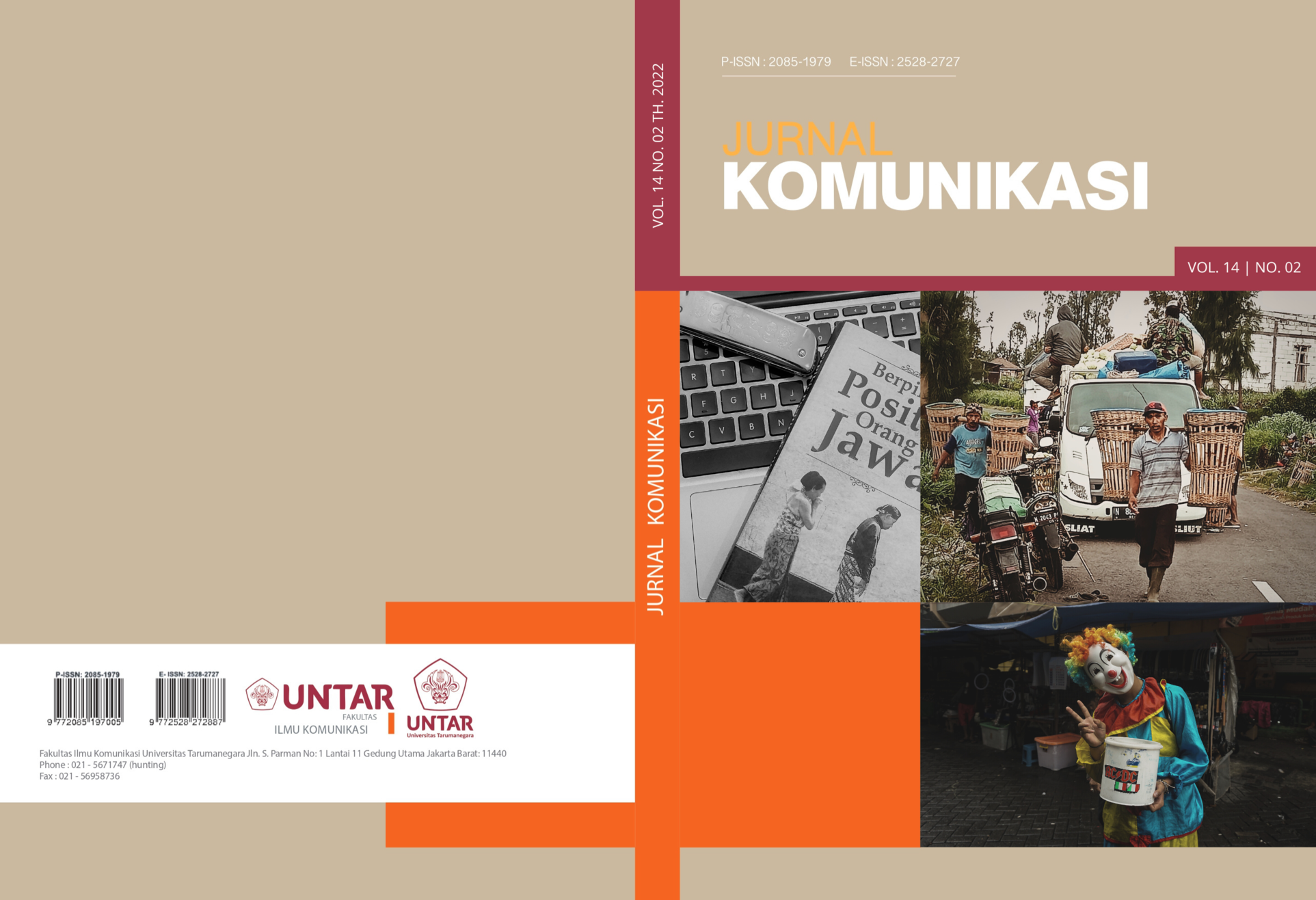Child Labor's Experience of Communication Behavior
Main Article Content
Abstract
Life as child labor is a compulsion that must be accepted for certain reasons. Some of the reasons why children in the Cibaduyut shoe industry center work as child laborers, including the living environment, which is indeed a home industry area, work that has been passed down from parents to children, to unmet needs from the family so that children have to look for jobs. own money to meet their needs. The purpose of this study is to analyze the experiences of child laborers regarding their communication behavior. The theory that underlies this research is the Phenomenological theory of Viktor Frankl, and the Symbolic Interaction theory of Mead. This study uses a qualitative approach with phenomenology as the research method. The results showed that the experience of child laborers regarding communication behavior is closely related to communication in shoe repair shops with bosses and employers, adult co-workers and fellow child laborers, peer groups, and family members. The communication of child laborers with the four environments encourages them to create distinctive cultural characteristics in the form of a world of symbols created together. The suffering they face is interpreted differently by child laborers, so that child laborers do not carry out the process of movements to lead to a better life.
Article Details
Section

This work is licensed under a Creative Commons Attribution-ShareAlike 4.0 International License.
This work is licensed under a Jurnal Komunikasi Creative Commons Attribution-ShareAlike 4.0 International License.How to Cite
References
Ahmed, S., & Ray, R. (2014). Health consequences of child labour in Bangladesh. Demographic Research, 30(1), 111–150. https://doi.org/10.4054/DemRes.2014.30.4
Al Ganideh, S. F., & Good, L. K. (2015). Understanding abusive child labor practices in the shadow of the Arab spring. Journal of Children’s Services, 10(1), 76–91. https://doi.org/10.1108/JCS-06-2014-0031
Avianti, A., & Sihaloho, M. (2015). Peranan Pekerja Anak Di Industri Kecil Sandal Terhadap Pendapatan Rumahtangga Dan Kesejahteraan Dirinya Di Desa Parakan, Kecamatan Ciomas, Kabupaten Bogor, Jawa Barat. Sodality: Jurnal Sosiologi Pedesaan, 1(1), 10–25. https://doi.org/10.22500/sodality.v1i1.9386
Bajari, A. (2012). Anak Jalanan Dinamika Komunikasi dan Perilaku Sosial Anak Menyimpang. humaniora.
Cristanty, M., & Azeharie, S. (2016). Studi Komunikasi Interpersonal Antara Perawat dengan Lansia di Panti Lansia Santa Anna Teluk Gong Jakarta. Jurnal Komunikasi, 8(2), 170–178.
Friedman, H. S., & Miriam W. Schustack. (2006). Kepribdian (Teori Klasik dan Riset Modern). Erlangga.
Gerungan, W. A. (2002). Psikologi Sosial. PT Refika Aditama.
Gerungan, W. A. (2010). Psikologi Sosial. PT Refika Aditama.
Hanurawan, F. (2010). Psikologi Sosial Suatu Pengantar. PT Remaja Rosdakarya.
ILO. (2004). Menghapuskan Bentuk-bentuk Terburuk Pekerja Anak. https://www.ilo.org/wcmsp5/groups/public/---asia/---ro-bangkok/---ilo-jakarta/documents/publication/wcms_125304.pdf
Julia T, W. (2013). Komunikasi Teori dan Praktik (Komunikasi dalam Kehidupan Kita). Salemba Humanika.
Kuswarno, E. (2013). Metodologi Penelitian Komunikasi Fenomenologi Konsepsi, Pedoman, dan Contoh Penelitiannya. Widya Padjadjaran.
Mudzongo, C. C., & Whitsel, C. M. (2013). Determinants of child labor in Malawi and Tanzania. Journal of Community Positive Practices, XIII(3) 2013, 3-24, 3, 3–24.
Paradizsa, I., Malik, L. I., Isa, M., & Anugrah, P. (2019). Self-Esteem, Contagion Theory dan Suporter Persija Jakarta. Jurnal Komunikasi, 11(1), 1. https://doi.org/10.24912/jk.v10i1.2072
Pemerintah Republik Indonesia. (2003). UU Nomor 13 tahun 2013 Tentang Ketenagakerjaan. 39, 74.
Ruben, B. D., & Stewart, L. P. (2014). Komunikasi dan Perilaku Manusia. PT Rajagrafindo Persada.
Sobur, A. (2014). Filsafat Komunikasi Tradisi dan Metode Fenomenologi. PT Remaja Rosdakarya.
Suyanto, B. (2013). Masalah Sosial Anak (Edisi Revisi). Kencana Prenada Media Group.
Tarsono, E., & Prasetyo, Y. (2011). Hukum Perlindungan Anak. Pusat Kajian Ilmu Hukum Fakultas Hukum Universitas Pancasila.
Wade, C., & Tavris, C. (2007). Psikologi. Erlangga.
Walgito, B. (2007). Psikologi Kelompok. Andi Offset.
Yusuf, S. (2009). Psikologi Perkembangan Anak & Remaja. PT Remaja Rosdakarya.

